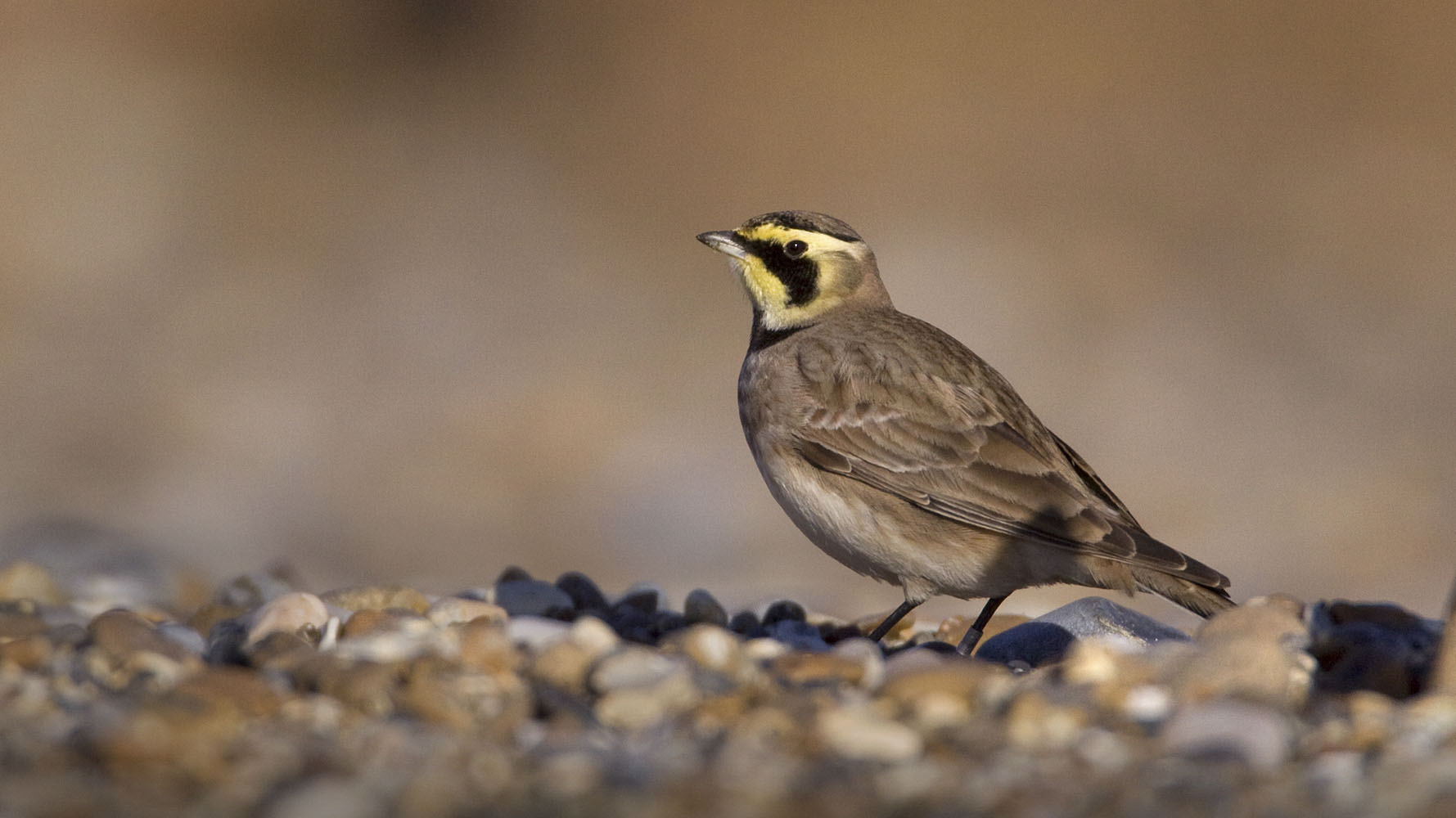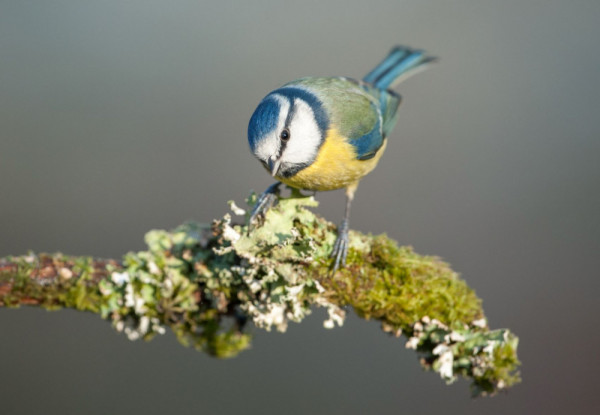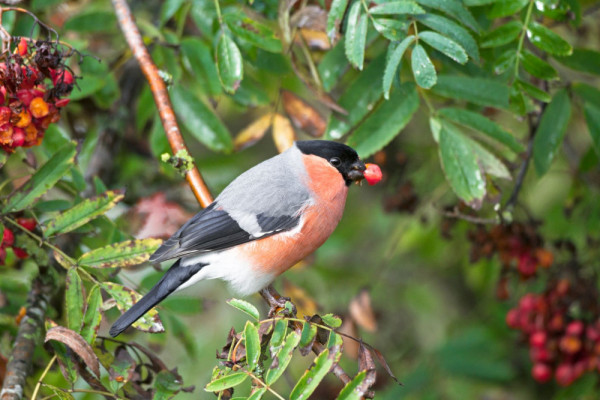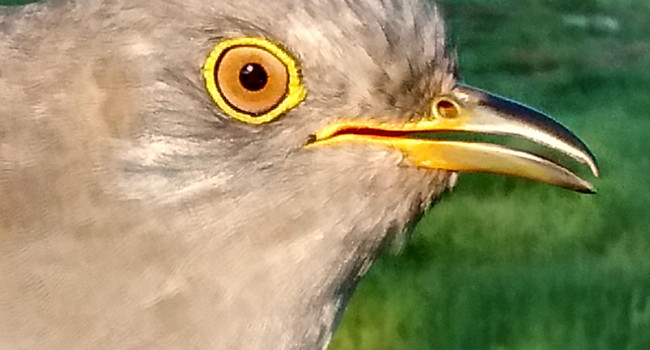
Migration Blog (mid-November to mid-December)
Unlike spring and autumn migration, which primarily involve birds migrating from breeding grounds to wintering areas, most migration in winter is governed by the weather and food supply. Predicting these movements can be difficult as it has many variables such as food availability, the intensity of cold weather, snow cover, duration of any cold weather, and wind direction.
The last couple of weeks have seen relatively mild conditions and a predominately westerly wind direction, with a brief period of easterlies over the first weekend of the month. This easterly pulse saw a flurry of arrivals including Goldcrest, Firecrest, Fieldfare, and Redwing as well as a scattering of scarcer species like Pallas’s Warbler, Dusky Warbler and Pallid Swift. Surprisingly, there were still the odd reports of summer migrants with late Willow Warbler (4), Garden Warbler (3), Common Redstart (1), Cuckoo (2) and Whitethroats (3) all reported across Britain and Ireland. Any colder weather will surely see these birds moving south. More traditional winter visitors continued to arrive with an increase in reporting for Greenland White-fronted Goose, Whooper Swan, Pale-bellied Brent Geese, Great Northern Diver and Jack Snipe. Several small flocks of Cattle Egrets were also reported and this species looks set to continue the way of Little and Great White Egret with more and more birds spending the winter within the UK. Snow Bunting numbers continued to build at traditional sites and some birds were found inland much to the delight of local patch watchers. Woodcock reports remained low and could be a reflection of the lack of easterlies during the later part of the autumn; perhaps the next full moon at the end of the month will produce some more birds. Woodcock often migrate in bigger numbers during full moons. Like Woodcock, Waxwing numbers were very low with only the odd single bird or small group being reported. It is not looking like a Waxwing winter at the moment, as the latest EuroBirdPortal map shows them not having moved much further south than Sweden and Northen Denmark. You have to go all the way back to 2012 for the last big influx. That one started towards the end of October so there is still time.
Rare species seen over the last couple of weeks included Hudsonian Godwit in Fife, Greater Yellowlegs in Suffolk, Common Nighthawk in Kent, Lesser Kestrel in Clare, Belted Kingfisher in Cork and Galway and Little Swift in Cork.

Species Focus - Blue Tit
Choosing Blue Tit as the species focus in a migration blog might seem a little odd. Indeed, the majority of Blue Tits ringed in the UK (150,284 were ringed in 2019) don’t move very far at all and it would seem that Blue Tit is a silly choice after all. However, if we dig into the BTO Online Ringing Report there are some interesting recoveries. There are several records of birds moving between southern England and Scotland, with one bird, ringed as a juvenile at Abberton Reservoir, Essex, being retrapped in Breakachy, Highland, 717km NNW of its original ringing site. Then there are those Blue Tits that have been ringed in Britain and Ireland and found abroad; two in Germany, five in France and two in Belgium. But it gets really interesting when we look at the birds that have been ringed abroad and retrapped here. Top of the pile is a bird that was ringed in Lithuania and caught in Kent, 1,386km from its Lithuanian ringing site. There are also birds from Norway, The Netherlands, Germany, The Channel Islands, France and Belgium. Largely, Blue Tits that breed here in Britain and Ireland don’t have to move very far as there are available food resources throughout the year, but for those birds that breed in Northern Scandinavia the winter months would be very challenging and so a movement south into the low countries is essential for their survival. Right now, Shetland is being graced with an influx of Blue Tits, a very uncommon bird on the islands. Of those that have been trapped by ringers, four have been wearing rings that were fitted in Norway. If Blue Tits have arrived in Shetland it stands to reason that some of these migrant Blue Tits may well have arrived further south too – we will have to wait and see if any are caught by ringers elsewhere in Britain and Ireland. Interestingly, it seems that the hot early 2020 spring might have taken its toll on Blue Tits here. The hot dry weather seems to have resulted in a paucity of caterpillars right at the time they were needed to feed young Blue Tits.
Over the next few days, freezing conditions look to be spreading across central Russia, pushing south and east as the week progresses. These colder conditions could force wildfowl westwards.
Looking ahead
Over the next few days, freezing conditions look to be spreading across central Russia, pushing south and east as the week progresses. These colder conditions could force wildfowl westwards to escape freezing lakes and rivers. Species Like Bewick’s Swan, which still haven’t arrived in their usual numbers, could be forced to migrate. Other wildfowl likely to arrive include Taiga Bean Goose, traditionally a late arrival, Wigeon, Teal and diving ducks such as Pochard , Goldeneye and maybe the first good arrival of Smew of the winter period.
Any northerlies over the coming weeks could see a good passage of Little Auks down the North Sea as well as more white-winged Gulls, Iceland and Glaucous, arriving from the arctic. These winds could also see rarer species like Snowy Owl, Ivory Gull or Gyr arriving, all three are impressive birds even if their plumage is predominantly black and white.
With westerlies dominating the latter part of the autumn, it is likely that this pattern will continue into early winter. Any late hurricanes that pass up the eastern seaboard of America and across the Atlantic could bring some American birds to our shores. At this time of year, the main species are wildfowl, waders and Gulls. Wildfowl include Green-winged Teal, American Wigeon, Blue-winged Teal, Lesser Scaup, Ring-necked Duck, and Bufflehead. Many of these are returning birds, but fast-moving low-pressure systems can result in new birds being pushed across. Typical waders to occur from across the Atlantic at this time of year include Lesser Yellowlegs, Long-billed Dowitcher and Semipalmated Sandpiper, whilst gull species include Ring-billed, Bonaparte’s, Laughing and Franklin's. In November 2005 there was a large influx of Laughing Gulls in Britain and Ireland with around 60 birds found across the country, 15+ in Cornwall alone. This influx also produced 7 Franklin's Gulls and proves that no matter what the time of year there is always something to look out for.
Any storms at this time of year are worth getting to the coast for (following your local guidance!) as they can still produce some seabirds with both Great and Pomarine Skuas likely as well as Little Auks, divers and sea duck often pushed closer inshore.
Providing food over the winter is not only a great way of seeing birds from the comfort of your own home, but they also provide the opportunity to see how the numbers of some species vary during the winter months. Keeping a count of the maximum numbers of species such as Blackbird is a good way to see how birds from Europe join our more resident individuals over the winter. Numbers of individuals visiting your garden can increase significantly in as little as a couple of days. Why not add your sightings to BirdTrack or join Garden BirdWatch to keep track of the numbers and species visiting your garden over the winter period? Winter can often throw up a few surprises with an odd bird found overwintering sometimes in people's gardens and these have included Oriental Turtle Dove, Baltimore Oriole, Yellow-rumped Warbler and Black-throated Thrush.

As the leaves fall off the trees, this is also a good time of year to search out some of the more secretive species such as Bullfinch. For such a colourful species, the Bullfinch can be surprisingly difficult to see, but during the winter they can often be found in scrubby areas feeding on berries. Their soft call is a good way of locating them and look for their distinctive white rump when they fly. Woodcocks are also best looked for at this time of year as they roost in the leaf litter, often near damp areas. Their superb camouflage makes them incredibly difficult to spot but with some perseverance you might see the occasional bird. Standing on the outskirts of a wood at dusk is a good way to see them as they head out for the night to feed on fields and meadows.







Share this page